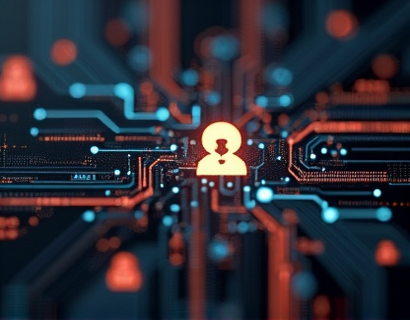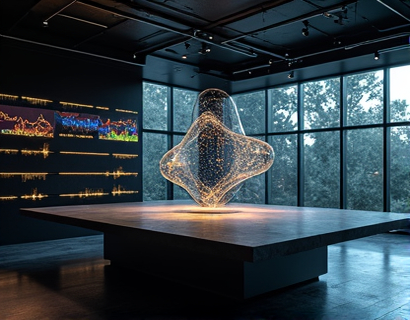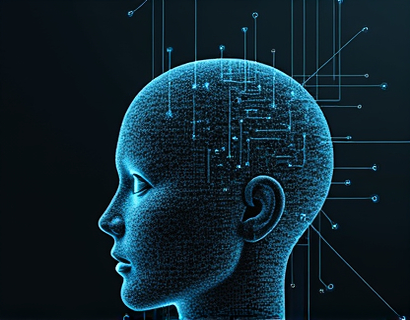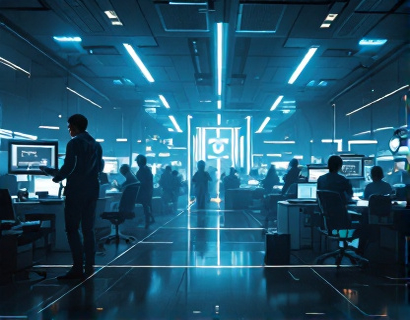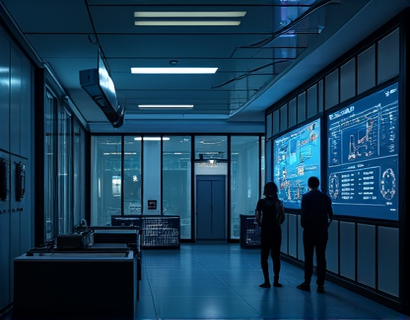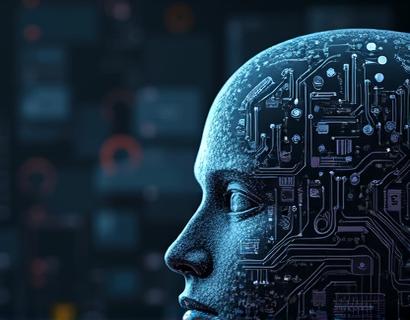UX Design Trends 2025: Mastering Digital Transformation with Expert Strategies for Enhanced User Experience
In the rapidly evolving landscape of digital products and services, UX design plays a pivotal role in driving success and user satisfaction. As we step into 2025, the field of UX design continues to evolve, influenced by technological advancements, changing user behaviors, and emerging design trends. This comprehensive guide aims to equip UX designers and enthusiasts with the latest insights, expert strategies, and practical tips to master digital transformation and enhance user experience.
Understanding the Current UX Design Landscape
The UX design landscape in 2025 is characterized by a focus on inclusivity, sustainability, and advanced technologies. Inclusivity in design ensures that digital products are accessible and usable by a diverse range of users, including those with disabilities. This trend is driven by legal requirements and a growing awareness of the importance of equitable design. Designers are incorporating features such as screen reader compatibility, adjustable text sizes, and high-contrast modes to create more accessible experiences.
Sustainability is another key trend, as users and businesses increasingly prioritize environmentally friendly practices. UX designers are considering the ecological impact of digital products, from energy-efficient web design to minimizing data usage. This shift not only appeals to environmentally conscious users but also aligns with corporate sustainability goals.
Advanced technologies such as artificial intelligence (AI), augmented reality (AR), and virtual reality (VR) are transforming UX design. AI-powered personalization allows for highly tailored user experiences, while AR and VR offer immersive interactions that blur the lines between the digital and physical worlds. These technologies present both opportunities and challenges, requiring designers to adapt their skills and approaches.
Key UX Design Trends for 2025
One of the most significant trends in UX design for 2025 is the rise of voice user interfaces (VUIs). With the increasing adoption of smart speakers and voice assistants, designers are focusing on creating seamless and natural voice interactions. This trend necessitates a shift from text-centric to conversational design, emphasizing clarity, brevity, and context awareness in voice commands and responses.
Another prominent trend is the integration of machine learning (ML) in UX design. ML algorithms can analyze user behavior and preferences to predict and adapt to user needs in real-time. This dynamic approach enhances user engagement and satisfaction by providing personalized content, recommendations, and interactions. Designers must consider the ethical implications of data usage and ensure transparency in how user data is collected and utilized.
Micro-interactions are becoming a crucial aspect of UX design, enhancing the overall user experience by providing subtle yet meaningful feedback. These small animations and effects, such as button press responses or loading indicators, can significantly improve usability and delight users. Designers are encouraged to craft micro-interactions that are intuitive, efficient, and aligned with the brand's personality.
The minimalist design approach continues to gain traction, with a focus on simplicity and clarity. Minimalist designs reduce cognitive load by eliminating unnecessary elements, making it easier for users to find what they need quickly. This trend aligns with the growing preference for clean, uncluttered interfaces that prioritize functionality over aesthetics.
Expert Strategies for Enhancing User Experience
To effectively implement these trends and drive digital success, UX designers should adopt several expert strategies. First, embracing a user-centered design (UCD) approach is essential. UCD involves understanding user needs, behaviors, and motivations through research and testing. This approach ensures that design decisions are based on real user insights rather than assumptions.
Conducting thorough user research is a cornerstone of UCD. Techniques such as user interviews, surveys, and usability testing provide valuable data on user preferences and pain points. Designers should also leverage analytics tools to gather quantitative data on user behavior, helping to identify areas for improvement and validate design hypotheses.
Prototyping and iterative testing are critical steps in the design process. High-fidelity prototypes allow designers to simulate real-world interactions and gather feedback early in the development cycle. Iterative testing involves refining the design based on user feedback, ensuring that the final product meets user expectations and requirements.
Collaboration across multidisciplinary teams is another key strategy. UX designers should work closely with developers, product managers, and other stakeholders to ensure a cohesive and aligned approach. Regular communication and shared goals help to align design intentions with business objectives and technical constraints.
Practical Tips for UX Designers
For UX designers looking to enhance their practice, several practical tips can make a significant difference. First, stay updated with the latest design tools and technologies. Tools like Figma, Sketch, and Adobe XD offer powerful features for creating and prototyping designs. Familiarity with coding languages such as HTML, CSS, and JavaScript can also deepen a designer's understanding of how designs translate into functional digital products.
Prioritizing mobile-first design is crucial, given the increasing use of mobile devices for accessing digital content. Designers should start with mobile interfaces and then scale up to larger screens, ensuring a consistent and optimized experience across devices. This approach helps to address the unique challenges and constraints of mobile usage.
Accessibility should be a top priority in every design project. Implementing accessibility best practices not only broadens the user base but also enhances the overall user experience. Tools like axe, Lighthouse, and WAVE can help identify and fix accessibility issues, ensuring compliance with standards such as WCAG.
Storyboarding and journey mapping are powerful techniques for visualizing user experiences. Storyboards provide a step-by-step visual representation of user interactions, while journey maps offer a broader view of the user's path through a product or service. These tools help designers identify potential pain points and opportunities for improvement.
Future-Proofing UX Design
As technology continues to advance, UX designers must prepare for future trends and challenges. One area to watch is the integration of biometric data in UX design. Biometric sensors can provide real-time feedback on user emotions and physiological responses, enabling designers to create more empathetic and responsive experiences. However, the use of biometric data raises privacy concerns, necessitating careful consideration and ethical design practices.
Sustainable design will continue to evolve, with a greater focus on reducing digital footprints and promoting eco-friendly practices. Designers can contribute by optimizing content delivery, minimizing data storage, and encouraging users to adopt sustainable behaviors through design nudges.
The rise of remote work and virtual collaboration tools will further influence UX design. Designers must create digital experiences that support seamless remote interactions, from virtual meetings to collaborative workspaces. This includes considering factors such as screen real estate, interaction patterns, and communication tools.
Finally, the importance of continuous learning and adaptation cannot be overstated. The UX design field is constantly evolving, and designers must commit to ongoing education and skill development. Engaging with design communities, attending conferences, and experimenting with new tools and techniques are essential for staying ahead in the industry.
In conclusion, mastering UX design in 2025 requires a deep understanding of current trends, the adoption of expert strategies, and the implementation of practical tips. By focusing on inclusivity, sustainability, and advanced technologies, UX designers can drive digital transformation and create exceptional user experiences. As the field continues to evolve, embracing change and fostering a culture of continuous learning will be key to success.














